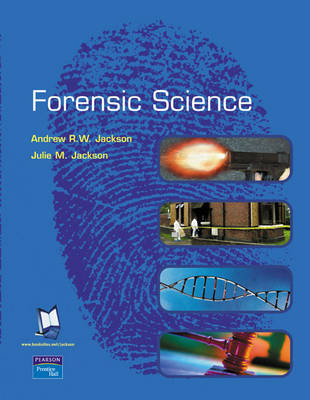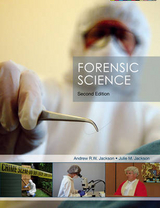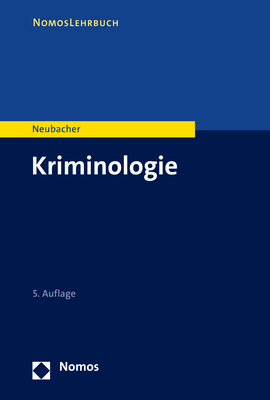
Forensic Science
Prentice Hall (Verlag)
978-0-13-043251-3 (ISBN)
- Titel erscheint in neuer Auflage
- Artikel merken
This text aims to provide a broad, scientifically rigorous introduction to Forensic Science. It covers processes from the crime scene to presentation of forensic science in court. It focuses on the chemical, biological and physical methods used in forensic examination. Techniques and procedures used in forensic science are fully covered. The book includes real-life case studies.
Chapter1 Introduction to forensic science 1.1 The role of forensic science in the investigation of crime 1.2 The provision of forensic science services in England and Wales 1.3 The scientific evaluation of forensic evidence. 1.4 Quality assurance in forensic science Chapter 2: The crime scene Chapter objectives Introduction 2.1 An overview of crime scene processing. 2.2 The first police officer attending and the preservation of the crime scene 2.3 Recording the crime scene 2.4 The recovery of physical evidence 2.5 Summary Problems Further Reading Chapter 3 Trace and contact evidence, Part I: Recoverable materials Chapter objectives Introduction 3.1 Hairs and other fibres 3.2 Glass 3.3 Soils 3.4 Vegetable matter 3.5 Paint 3.6 Others 3.7 Summary Problems Further Reading Chapter 4 Trace and contact evidence, Part II: Fingerprints and other marks and impressions Introduction Chapter objectives 4.1 Fingerprints 4.2 Footwear impressions 4.3 Bite marks 4.4 Tool marks 4.5 Tyre marks 4.6 Textile products 4.7 Summary Problems Further Reading Chapter 5 The examination of body fluids Chapter objectives Introduction 5.1 Blood 5.2 Bloodstain pattern analysis 5.3 Saliva 5.4 Semen 5.5 Summary Problems Further Reading Chapter 6 The analysis of deoxyribonucleic acid (DNA): DNA profiling "Guest chapter by Harry Mountain "Chapter objectives Introduction. 6.1 The forensic value of DNA profiling 6.2 DNA, genes and their relationship to individuality 6.3 Forensic DNA analysis and DNA profiling 6.4 Interpretation of DNA profiles 6.5 Mitochondrial DNA analysis 6.6. Current and future developments 6.7. Summary Problems Further reading Chapter 7 Forensic toxicology and drugs of abuse Chapter objectives Introduction 7.1 Common poisons 7.2 Drugs of abuse 7.3 Factors affecting toxicity 7.4 Routes of uptake and elimination of drugs and other toxic substances 7.5 The analysis of drugs and other poisons 7.6 Summary Problems Further Reading Chapter 8 Questioned documents Chapter objectives Introduction 8.1 Handwriting investigation 8.2 Signature investigation 8.3 Typed, word-processed and photocopied documents 8.4 Printed documents 8.5 The analysis of handwriting inks 8.6 Paper analysis 8.7 Tears, folds, holes, obliterations, erasures and indentations 8.8 Summary Problems Further reading Chapter 9 Firearms Chapter objectives Introduction 9.1 Types of firearms and ammunition 9.2 Internal, external and terminal ballistics 9.3 The examination of suspect firearms 9.4 The examination of spent cartridge cases, bullets and wads 9.5 Gunshot residues 9.6 Summary Problems Further Reading Chapter 10 Fires Chapter objectives Introduction 10.1 The nature of fire 10.2 The behaviour of fire 10.3 Fire scene investigation 10.4 The analysis of fire accelerants 10.5 Summary Problems Further Reading Chapter 11 Explosions and explosives Chapter objectives Introduction 11.1 The classification of explosions and explosives 11.2 Explosion scene investigation 11.3 The analysis of explosives 11.4 Summary Problems Further Reading Chapter 12 The forensic examination of human remains Chapter objectives Introduction 12.1 Early post-mortem changes and the estimation of time of death 12.2 Post-mortem decomposition and related phenomena 12.3 The establishment of cause of death 12.4 The identification of human remains. 12.5 Summary Problems Further Reading Chapter 13 Forensic science in court Chapter objectives Introduction 13.1 The criminal court system in England and Wales 13.2. The forensic scientist's report for use in court 13.3 The role of the forensic scientist as expert witness 13.4 The interpretation of evidence 13.5 Summary Problems Further Reading Glossary Index
| Erscheint lt. Verlag | 11.3.2004 |
|---|---|
| Sprache | englisch |
| Maße | 189 x 246 mm |
| Gewicht | 720 g |
| Themenwelt | Recht / Steuern ► Strafrecht ► Kriminologie |
| ISBN-10 | 0-13-043251-2 / 0130432512 |
| ISBN-13 | 978-0-13-043251-3 / 9780130432513 |
| Zustand | Neuware |
| Informationen gemäß Produktsicherheitsverordnung (GPSR) | |
| Haben Sie eine Frage zum Produkt? |
aus dem Bereich



